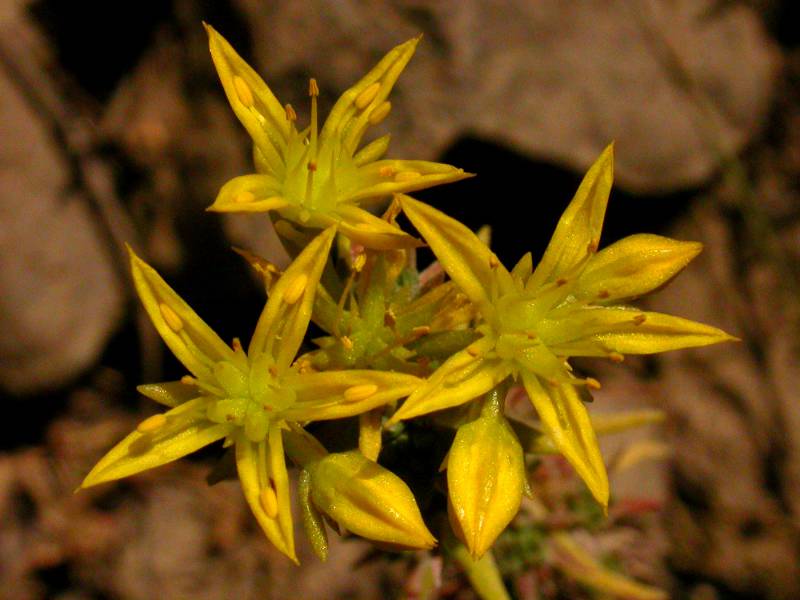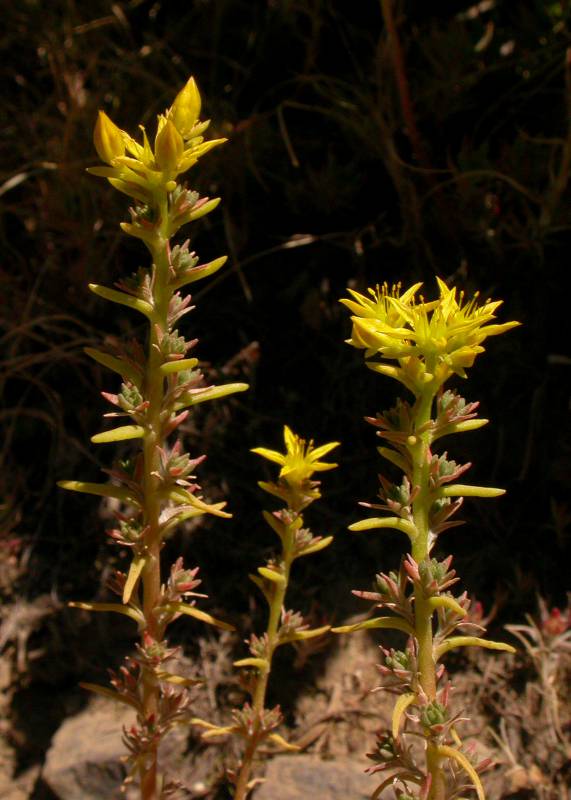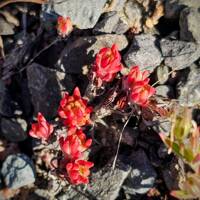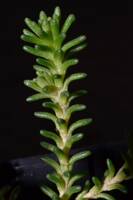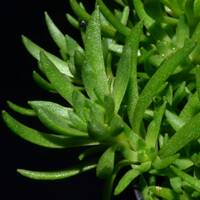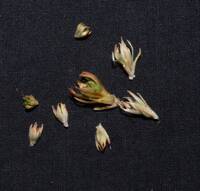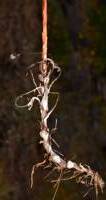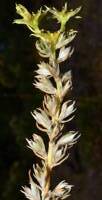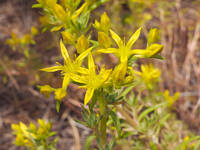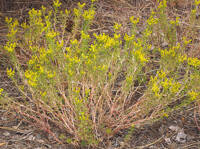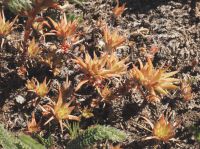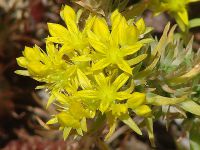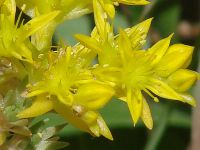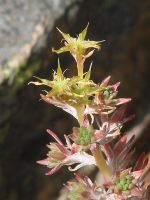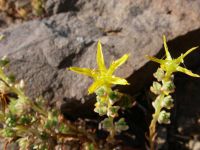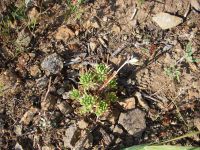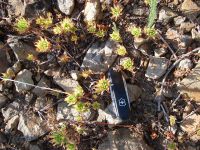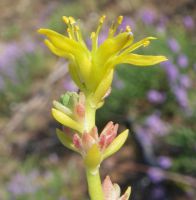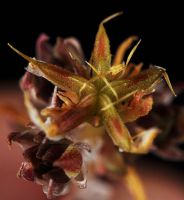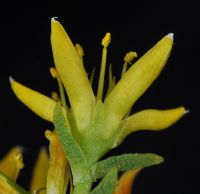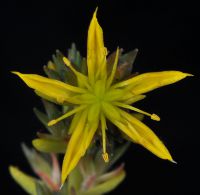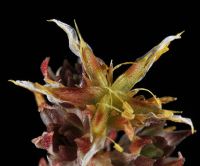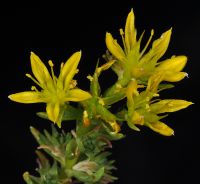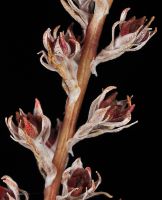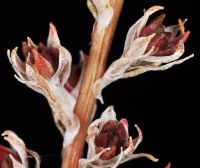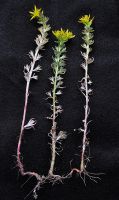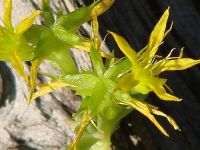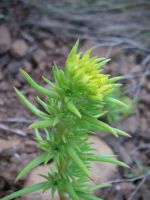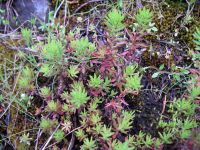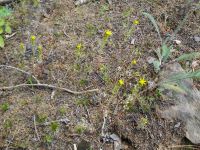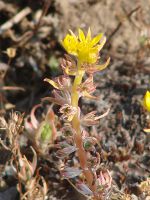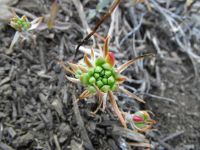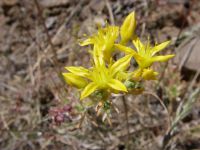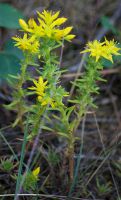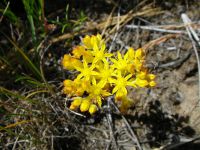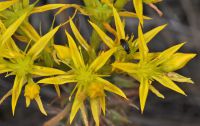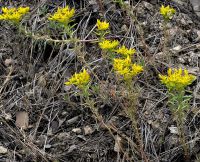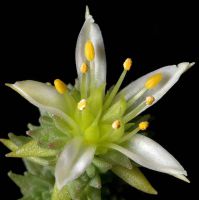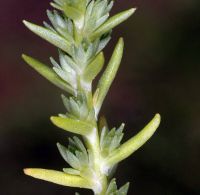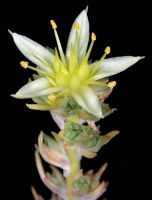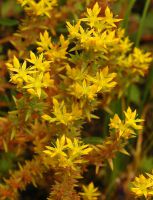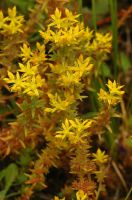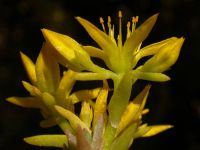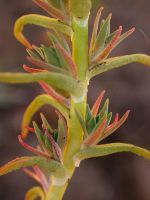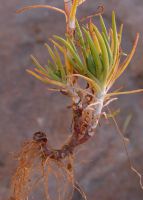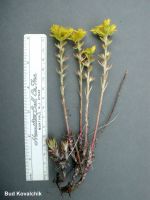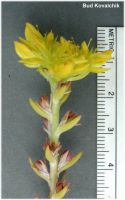Distribution: Occurring chiefly east of the Cascade crest in Washington; British Columbia to California, east to the northern Rocky Mountains.
Habitat: Grasslands and ponderosa pine forests to sub-alpine ridges, on dry, gravelly benches, rock crevices and talus.
Flowers: May-July
Origin: Native
Growth Duration: Perennial
Conservation Status: Not of concern
Pollination: Bees, flies
Glabrous perennial herbs from rhizomes, with numerous sterile shoots, the flowering stems erect to ascending, up to 2 dm. tall.
Leaves alternate, linear or narrowly linear-lanceolate, keeled or nerved, narrowly tapered to a sharp tip, 5-15 mm. long, deciduous by flowering, except the decumbent branches have many leaves persistent, sometimes only the mid-ribs remaining; upper cauline leaves sometimes persistent and bearing bulblet-like structures.
Flowers in compact cymes; sepals 5, lanceolate, 2 mm. long; petals 5, yellow, 6-8 mm. long, spreading, lanceolate, acuminate and ending in a sharp point; stamens 10, 1.5-2.5 mm. shorter than the petals, 5 attached to the base of the petals. Occasionally some or all of the flowers are reduced to bulblets.
Follicles 5, widely divergent.
Publication: Fl. Amer. Sept. 1: 324. 1813.
Sedum douglasii Hook.
-
ssp. stenopetalum – wormleaf stonecrop
 Occurring chiefly east of the Cascade crest in Washington; British Columbia to California, east to the northern Rocky Mountains, except where subsp. ciliosum occurs.
Occurring chiefly east of the Cascade crest in Washington; British Columbia to California, east to the northern Rocky Mountains, except where subsp. ciliosum occurs.
PNW Herbaria: Specimen records of Sedum stenopetalum in the Consortium of Pacific Northwest Herbaria database
WA Flora Checklist: Sedum stenopetalum checklist entry
OregonFlora: Sedum stenopetalum information
E-Flora BC: Sedum stenopetalum atlas page
CalPhotos: Sedum stenopetalum photos

